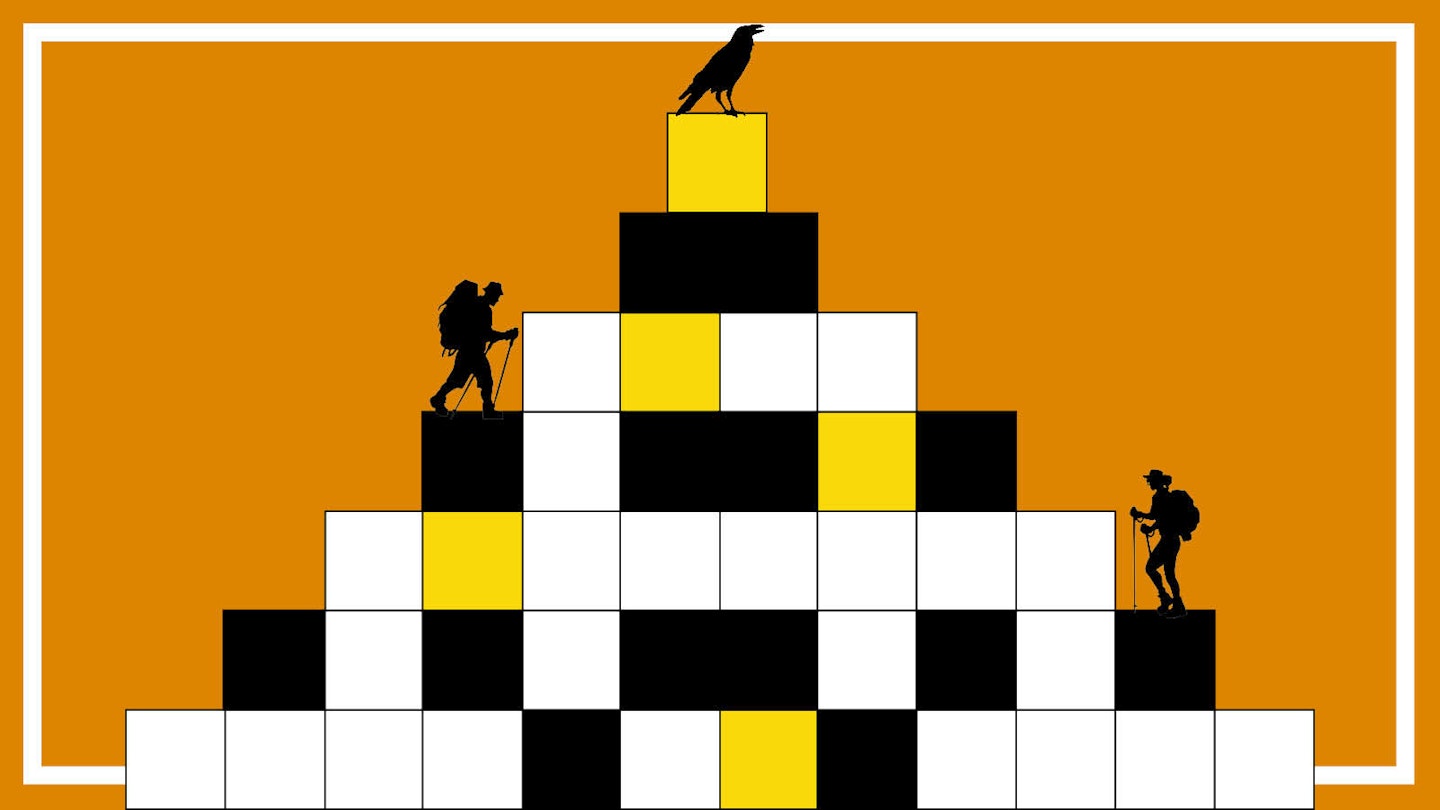Pair And Square is a puzzle about making four-letter words out of pairs of two letters. The overall aim is to write all the given pairs of letters once each into the grid, so that the squares connected by arrows all form four-letter words. For example, in this puzzle we can see that VA and LA, read in the arrow’s direction, spells LAVA. The words used will all be relatively common, without any proper nouns.

Getting started
The best way to get going is by looking at the more unusual letter pairs, to see what can fit next to them. The other arrow next to VA tells us that there is another word ending in VA – by running through the list of letter pairs we can see that the only one that can work is DI, making DIVA. Similarly, the arrows by JE show that it is the start to two words, the only possible options being ER and RK for JEER and JERK.
This latter example presents the further problem, however, of how to tell which square each possibility should go in. To do this, see that one of the two will have to form a word with LA. Given that LAER is not a word, ER must go in the upper square, and RK in the lower, to form LARK.

Making progress
To progress, keep making similar deductions, marking off letters as you work around the grid. If you examine a square and find that there are still multiple letter pairs that could fit, try working elsewhere on the grid until you’ve narrowed it down to just one possible answer.
Tips for solving:
- Always cross off used pairs, to avoid accidentally repeating one later
- Go through the list one by one, to make sure you don’t skip the right pair
- Don’t take the first possible pair, as there may be more than one that works, requiring further deduction
- Focus on squares with more than one adjacent pair, to narrow down possibilities
Overcoming an impasse
All these tools will often be sufficient to complete a Pair & Square puzzle. Sometimes, however, you will come to an impasse, as in this example. The square next to DI and BE could contain either ET or LL. The one between GA and CU could have LL or RB. There isn’t an obvious way to proceed, but if we look closely we’ll find there’s still a way to complete the puzzle.

Here, GA has two adjacent blank squares, and the only pairs that would work are LL and RB. While we don’t yet know which goes where, this does mean that LL must be by GA, and not BE and DI. So we can actually place ET between those two, and complete the top-left corner as before.
To help solve that tricky bottom-left area, we need to look at the remaining letter pairs and think about the possible combinations. AC, for example, can only be made into ACHE, and YE can only become YELL. Looking at the squares, you can see that the bottom two on the left side only connect to one square each, so that must be where these pairs go. Combining this with the fact that LL must be next to GA, we can therefore write YE and LL in the second from bottom row.
The remaining pairs should all slot into place, creating a completed puzzle using every letter pair whose arrows make all valid four-letter words.

